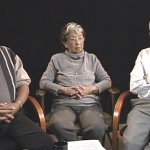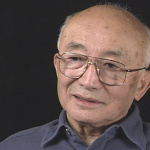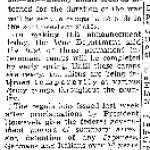Fort Richardson (detention facility)
| US Gov Name | Fort Richardson Internment Camp |
|---|---|
| Facility Type | U.S. Army Internment Camp |
| Administrative Agency | U.S. Army |
| Location | Fort Richardson, Alaska (61.2500 lat, -149.6833 lng) |
| Date Opened | |
| Date Closed | |
| Population Description | Held Japanese immigrants from Alaska, plus two German nationals. |
| General Description | Located 9 miles north of downtown Anchorage, Alaska. |
| Peak Population | 17 (1942-02-14) |
| National Park Service Info | |
Army-run internment camp outside of Anchorage, Alaska, that held at least seventeen enemy aliens from Alaska between December 1941 and June 1942.
In anticipation of a possible war with Japan, Fort Richardson and the associated Elmendorf Airfield were built in 1940 about nine miles northwest of Anchorage. In the days after the attack on Pearl Harbor, the FBI rounded up eleven enemy aliens in Alaska—nine Issei and two Germans—who were interned at Fort Richardson. By February 14, 1942, fifty-five enemy aliens in Alaska were in custody, of whom seventeen were held at Fort Richardson. By this time, construction had begun on a separate internment camp facility located east of the main army compound along what is now Davis Highway. About 650' square, the camp was surrounded by a double barbed wire with guard towers at the four corners. Internees lived in 16' x 16' winterized military tents on wooden platforms; wooden walkways connected them to a mess hall and latrines. Period sources list the number of tents as varying from 26 to 48. By June 1942, 104 enemy aliens in Alaska were in custody, including ninety-two Issei men, two Issei women, nine German men and one Italian man. It is not known how many of this group—if any—were held at Fort Richardson. By June 10, Alaska's interned enemy aliens had been moved to camps in the continental U.S. The group at Fort Richardson was sent first to Fort Lewis, Washington . From there, nearly all were sent to Fort Sam Houston, Texas , and then to the Lordsburg, New Mexico internment camp. [1]
According to research by Morgan R. Blanchard, the internees known to have been at Fort Richardson included Naoyoshi Akimoto, Wada Hikohachi Fukuyama, Ginichi (Jimmy) Fujii, Hideo Hama, Haruzo (Roy) Haruki, Takami Kanaeko, Harry Sotaro Kawabe , Yusuke (Harry) Kimura, Johan Ferdinand Kube, Guenther Paul Victor Kurtz, Shigematsu (George) Nishiyama, Minoru (Roy) Omura, Harushi Oyama, Kichijiro (George) Suzuki, Shonosuke Tanaka, and Kichirobei (James) Tatsuda. Many were among the leaders of Japanese American communities in Alaska. [2]
The site remains a military base today as Joint Base Elmendorf-Richardson (JBER), created in 2010 when Fort Richardson and Elmendorf Air Force Base were combined. In 2016, JBER hosted a Day of Remembrance event at which descendants of internees held there were recognized. [3]
Footnotes
- ↑ Morgan R. Blanchard, "Level II Cultural Resources Survey of the Fort Richardson Internment Camp (FRIC), Joint Base Elmendorf-Richardson (JBER), Alaska (Redacted)," (Anchorage, Alaska: Northern Land Use Research Alaska, LLC, 2016), 2, 16, 20–21, 24–25; Tetsuden Kashima, Judgment Without Trial: Japanese American Imprisonment during World War II (Seattle: University of Washington Press, 2002), 89, 91.
- ↑ Blanchard, "Level II Cultural Resources Survey of the Fort Richardson Internment Camp (FRIC)," 32.
- ↑ Blanchard, "Level II Cultural Resources Survey of the Fort Richardson Internment Camp (FRIC)," 15; Kyle Johnson, "JBER Hosts Ceremony Honoring Families of Those Interned at Recently Discovered Camp," Joint Base Elmendorf-Richardson website, accessed on May 28, 2020 at Feb. 24, 2016, https://www.jber.jb.mil/News/News-Articles/Article/771152/jber-hosts-ceremony-honoring-families-of-those-interned-at-recently-discovered/ .
Last updated July 29, 2021, 7:10 p.m..





